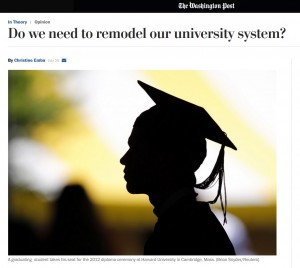U.S. News & Wo rld Report released its annual compendium of rankings of undergraduate colleges and universities across the nation last week. This is usually an eagerly-awaited event at many institutions around the country, and one with which most of us in leadership positions have a love-hate relationship. On the one hand, we all decry how the process attempts to reduce what are in most cases large, complex, and multi-mission institutions into a single number. On the other, we all recognize the attention it generates and the potential impact it can have on the decisions of millions of college-going students.
rld Report released its annual compendium of rankings of undergraduate colleges and universities across the nation last week. This is usually an eagerly-awaited event at many institutions around the country, and one with which most of us in leadership positions have a love-hate relationship. On the one hand, we all decry how the process attempts to reduce what are in most cases large, complex, and multi-mission institutions into a single number. On the other, we all recognize the attention it generates and the potential impact it can have on the decisions of millions of college-going students.
I’ll cut to the chase and the news everyone is most interested in – USF maintained its top 100 position from the prior year, dropping just one spot from tied for #96 last year to tied for #97. But like the proverbial duck on the surface of the water, this small change masks a lot what is happening below the surface.


